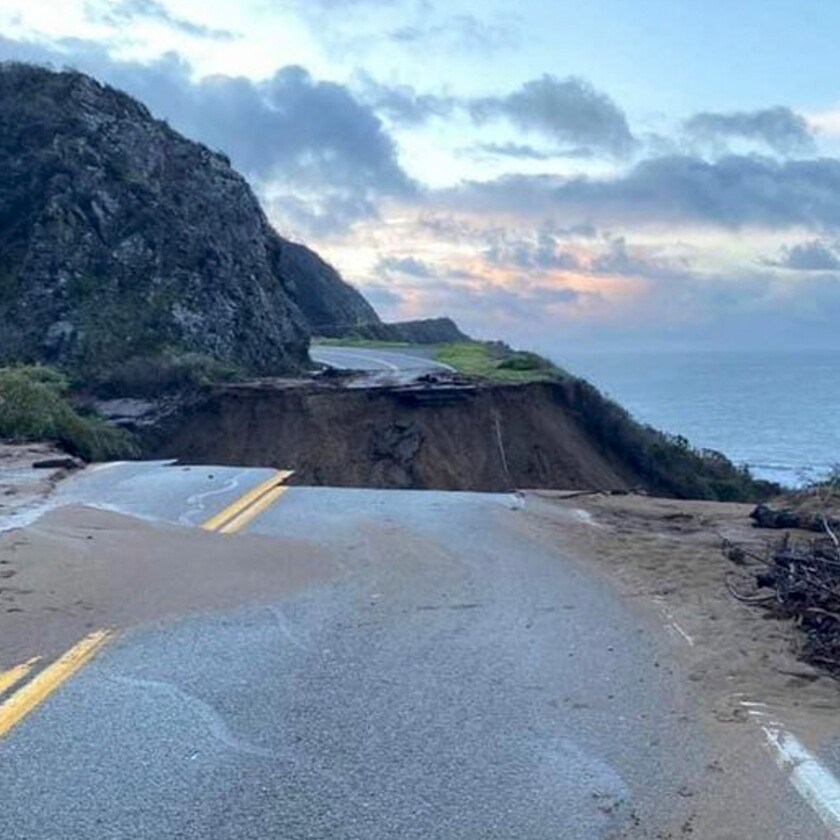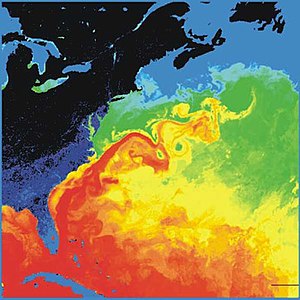
Along both American coasts, the highways and byways, signs of the times?
In California, it’s the iconic Highway 1 (with that famous stretch known as the Pacific Coast Highway). The shifting climate has caused weather that is undermining the spectacle route that hugs the Pacific cliffside. In New Mexico, along old Route 666 in Gallup, was a coronavirus outbreak second only to the one in New York City. In Texas, in mid-February, icy conditions caused a 132-car pileup on I-35 near Fort Worth.
From SF Gate: “Life here in this tiny town built on the continent-ending cliffs of the Pacific coast has always had an anxious ‘when,’ not ‘if,’ quality to it. And much of that uncertain fate, season to season and year to year, has been tied to the two-lane road that runs through it. Highway 1 is a California spectacle, a Depression-era monument to the state’s quixotic ambitions and stunning beauty. It runs from the Orange County surf haven of Dana Point in the south into cannabis-cultivating Mendocino County, carrying heavy traffic over the Golden Gate Bridge and under the bluffs of Santa Monica, where it is better known as the Pacific Coast Highway, on its 650-mile route.
“Late last month, pounding rains brought a torrent of mud and tree trunks the size of small boats through the narrow culvert at Rat Creek, about 25 miles north of here, where a wildfire had burned just months before. The slide washed away a 150-foot section of road and severed prime wine country to the south from the marine wonderland of Monterey Bay to the north, an isolation that will take months to end. The tourists who once filled the simple hillside cabins for rent here have been replaced by cleanup crews.” [Full story]
In the Atlantic, another kind of “highway,” the Gulf Stream, has been in the news after studies showing that the powerful current that brings warmth to the northern past of the ocean seems to be losing strength due to the same shift in climate. Just such a change in the current — albeit greatly exaggerated (to include a sudden event impacting Canada and the U.S.) — was the subject of the movie, The Day After Tomorrow.
From the London Guardian: “The Atlantic Ocean circulation that underpins the Gulf Stream, the weather system that brings warm and mild weather to Europe, is at its weakest in more than a millennium, and climate breakdown is the probable cause, according to new data.
“Further weakening of the Atlantic Meridional Overturning Circulation (AMOC) could result in more storms battering the UK, more intense winters, and an increase in damaging heatwaves and droughts across Europe. Scientists predict that the AMOC will weaken further if global heating continues, and could reduce by about 34% to 45% by the end of this century, which could bring us close to a “tipping point” at which the system could become irrevocably unstable. A weakened Gulf Stream would also raise sea levels on the Atlantic coast of the US, with potentially disastrous consequences. Stefan Rahmstorf, of the Potsdam Institute for Climate Impact Research, who co-authored the study published on Thursday in Nature Geoscience, told the Guardian that a weakening AMOC would increase the number and severity of storms hitting Britain, and bring more heatwaves to Europe.” [Full story]
And so that is where we are: on the cusp of massive landscape changes as we are also on the cusp of massive societal gyration and change.
[resources: Tower of Light]





